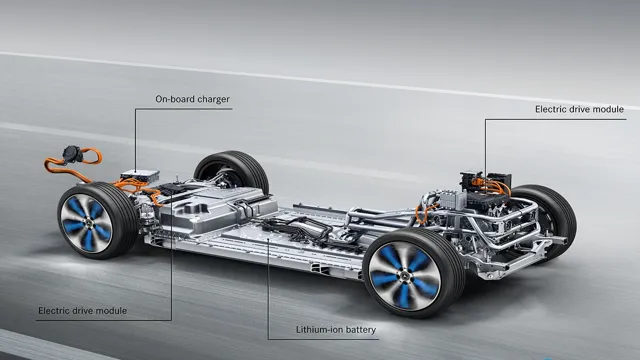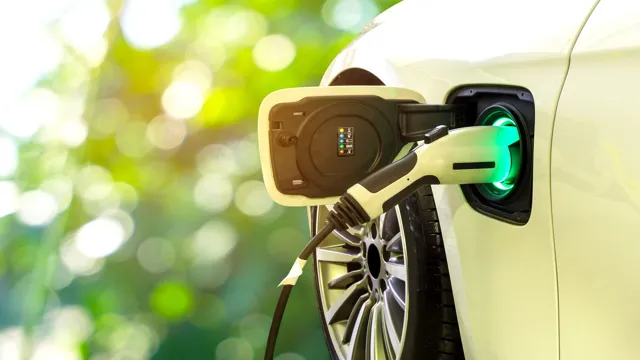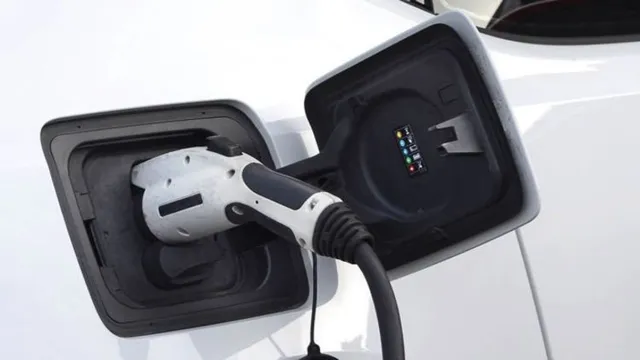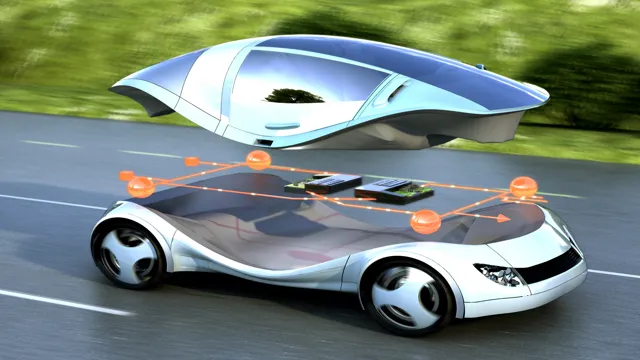Revolutionizing the Roads: A Guide to the Latest Technological Advances for Electric Cars
Electric cars have been gaining attention and popularity in recent years, not only for their eco-friendliness but also for their technological advancements. The automotive industry is continuously developing new features and innovations for electric cars to improve their performance, range, and safety. With an increasing demand for sustainable transportation, automakers are investing more in research and development to enhance electric cars’ capabilities and make them more appealing to consumers.
In this blog, we’ll explore some of the latest technological advances for electric cars that are shaping the future of transportation and energy. From electric propulsion systems to autonomous driving, we’ll delve into the exciting world of electric cars and their evolving technologies. So, buckle up and let’s take a ride into the electrifying realm of electric cars!
Battery Technology
As electric cars become more prevalent, technological advances in battery technology are constantly being made to enhance their performance and increase driving range. Lithium-ion batteries remain the most popular choice for powering electric cars, but newly developed solid-state batteries offer higher energy density and a longer lifespan. Additionally, companies are researching other battery chemistries such as lithium-sulfur and lithium-air for even greater improvements.
One of the biggest challenges with electric car battery technology is the issue of range anxiety – the fear of running out of battery power before reaching the destination. However, battery technology is rapidly improving, with high-speed charging stations becoming more common and wireless charging being developed. As electric car battery technology continues to evolve, it is becoming increasingly feasible for everyday drivers to fully embrace this sustainable and efficient mode of transportation.
Solid-State Batteries: The Future of Electric Cars?
Electric cars are becoming more commonplace, thanks to advancements in battery technology. One of the most promising developments is the solid-state battery, which offers numerous advantages over traditional lithium-ion batteries. Solid-state batteries use a solid electrolyte instead of the liquid electrolyte found in current lithium-ion batteries.
This makes them safer, more efficient, and longer-lasting. They also have a higher energy density, which means they can store more energy in a smaller space. And perhaps most importantly for electric cars, they can charge faster, reducing the amount of time drivers need to spend waiting for their vehicles to charge.
While solid-state batteries are still in development, they could be the key to making electric cars more widely accessible and practical for everyday use.

Battery Swapping: The Solution to Range Anxiety?
Battery technology is constantly improving, but range anxiety remains a common concern for electric vehicle (EV) owners. One potential solution to this is battery swapping. Imagine pulling into a battery swap station and, within minutes, having your depleted battery replaced with a fully charged one.
This would eliminate the need for lengthy charging stops and allow for longer trips without worrying about running out of power. However, implementing battery swapping on a large scale is not without its challenges, including standardization of battery sizes and connectors, infrastructure costs, and consumer adoption. Nonetheless, as EVs become more popular, battery swapping could play a role in alleviating range anxiety and making electric cars a more practical option for drivers.
Charging Infrastructure
Technological advances for electric cars have led to an increase in the demand for charging infrastructure. With more and more electric vehicles hitting the roads, it’s crucial to have convenient and efficient ways for drivers to recharge their cars. Charging stations are popping up all over the place in urban areas, making it easier for EV drivers to keep their cars charged up.
The latest technological advances in charging infrastructure include high-speed charging stations, wireless charging pads, and portable chargers that can be carried in the trunk of the car. These advancements are making it easier for drivers to charge their cars quickly and efficiently, eliminating any range anxiety that may have deterred potential buyers in the past. It’s clear that with the continued growth of the EV market, the charging infrastructure will continue to evolve and improve, making it easier and more convenient for drivers to switch to electric vehicles.
Wireless Charging: The Convenience Factor
Wireless charging has become an increasingly popular convenience factor for individuals in today’s fast-paced world. It eliminates the hassle of having to carry around various chargers and cords, and being tethered to a specific outlet. As more and more devices become capable of wireless charging, the infrastructure for it is becoming more prevalent in public spaces such as coffee shops and airports.
This makes it more convenient for individuals on-the-go to quickly charge their devices whenever necessary. The keyword “charging infrastructure” refers to the various locations where wireless charging is available, making it easier than ever for individuals to keep their devices charged and ready to use at all times. With this technology, individuals can enjoy the freedom of movement without worrying about their device’s battery life.
Ultra-Fast Charging: Reducing Charging Time Significantly
When it comes to electric vehicle (EV) charging, one of the biggest factors that concerns drivers is how long it takes to charge their EVs. This is where ultra-fast charging infrastructure comes in. This technology promises to reduce charging time significantly, making it more convenient for drivers to charge their vehicles and get back on the road.
With ultra-fast charging speeds, drivers can expect to charge their EVs up to 80% in as little as 20 minutes. This is a huge improvement compared to traditional charging methods that can take several hours to fully charge an EV. The increasing availability of ultra-fast charging stations across the globe is a promising sign for the future of EVs.
As we continue to advance in technology, it won’t be long before they become the norm on our roads. With this charging infrastructure, EV owners can enjoy the convenience of fast charging and the peace of mind that they’re doing their part for the environment.
V2G Technology: The Potential of Bidirectional Charging
V2G Technology V2G technology or Vehicle-to-Grid is a two-way charging process that allows electric vehicles to not just charge from the grid but also return electricity to the power grid. In this system, electric vehicles become not only consumers but also producers of electricity. It allows for greater energy management and is seen as a crucial component in the transition toward a more sustainable, renewable energy future.
Charging infrastructure will play a critical role in the widespread adoption of V2G technology. As more and more electric vehicles hit the market, the demand for charging infrastructure will increase, and governments, industries, and stakeholders need to come together to ensure that there is enough infrastructure to support the growth of V2G technology. The development of V2G technology is an exciting development and marks a significant milestone in our efforts to fight climate change.
Electric vehicle owners will be able to take advantage of this technology and give back to the environment while also saving money on their energy bills.
Autonomous Driving Technology
Technological advances for electric cars have led to the emergence of exciting new features, such as autonomous driving technology. While fully autonomous vehicles may still be a few years away, car manufacturers are making significant progress towards this goal. For instance, some cars can already park themselves, stay in their lanes, and even change lanes on their own.
This technology is made possible by the use of sensors and cameras that help the vehicle detect obstacles and adjust its trajectory accordingly. As electric cars continue to gain popularity, more and more research and development will be devoted to making these vehicles smarter and safer. With the help of technological innovations, we can expect to see a future where electric cars can drive themselves, making our roads safer and more efficient.
It’s an exciting time to be part of the electric car revolution, and the advancements in autonomous driving technology are just the beginning.
Level 5 Autonomy: The Holy Grail of Self-Driving Cars
Autonomous driving technology has come a long way over the years, and Level 5 autonomy is the holy grail of self-driving cars. This level of autonomy means that the car doesn’t require any human interaction to drive. It can detect its environment and can make decisions on its own, thus providing an entirely hands-free driving experience to passengers.
Many automobile companies and tech giants are working towards achieving Level 5 autonomy, such as Tesla, Waymo, and Uber. The technology utilized in autonomous vehicles involves a diverse range of systems such as LiDAR, radar, and cameras. These instruments enable the car to interpret its surroundings, predict potential obstacles, and determine the best course of action.
Nonetheless, achieving Level 5 autonomy presents several challenges such as safety regulations, legal frameworks, and deep learning algorithms. Once these challenges are expertly addressed, autonomous driving may become safer and more reliable than traditional driving. The future of autonomous driving is exciting, and we can’t wait to see where Level 5 autonomy takes us.
AI-Enabled Sensors: Making Driving Safer and More Efficient
Autonomous Driving Technology Autonomous driving technology has come a long way in recent years. AI-enabled sensors are now making our driving experience even safer and more efficient by detecting and interpreting data in real-time. This technology provides drivers with additional sensors and information needed to make better driving decisions.
AI-enabled sensors are equipped with cameras that can detect objects like pedestrians, animals, and other cars. These sensors are also capable of detecting and interpreting traffic signals and can alert drivers if they are about to run a red light. Another added benefit of these sensors is that they can predict weather conditions, and help drivers to adapt their driving accordingly.
With autonomous driving technology and AI-enabled sensors, our roads are becoming safer and more efficient by the day.
Conclusion: The Future looks Bright for Electric Cars
In conclusion, the technological advances for electric cars have truly sparked a revolution in the automotive industry. From longer battery life to smarter charging systems, each innovation has helped to overcome previous limitations and improve the performance, affordability, and accessibility of electric cars. As we continue down this path, it’s clear that the future is electric – and the road ahead is sure to be electrifying!”
FAQs
What are some technological advances that have made electric cars more efficient?
The development of more efficient batteries, lightweight materials, and regenerative braking systems have all contributed to improving the efficiency of electric cars.
How have charging stations improved for electric cars?
Charging stations have become more widely available and faster, with some offering super-fast charging that can provide a significant battery boost in just a few minutes.
What role do smart grids play in supporting the growth of electric cars?
Smart grids can help ensure that electric cars are charged when renewable energy sources like solar and wind power are at their peak, reducing the need for non-renewable energy sources.
What are some features of modern electric cars that make them more convenient for drivers?
Modern electric cars often come with features like remote charging and climate control, as well as sophisticated infotainment systems that can provide real-time information about charging status and range.






